Learn How to Make the Best Belgian Waffles at Home
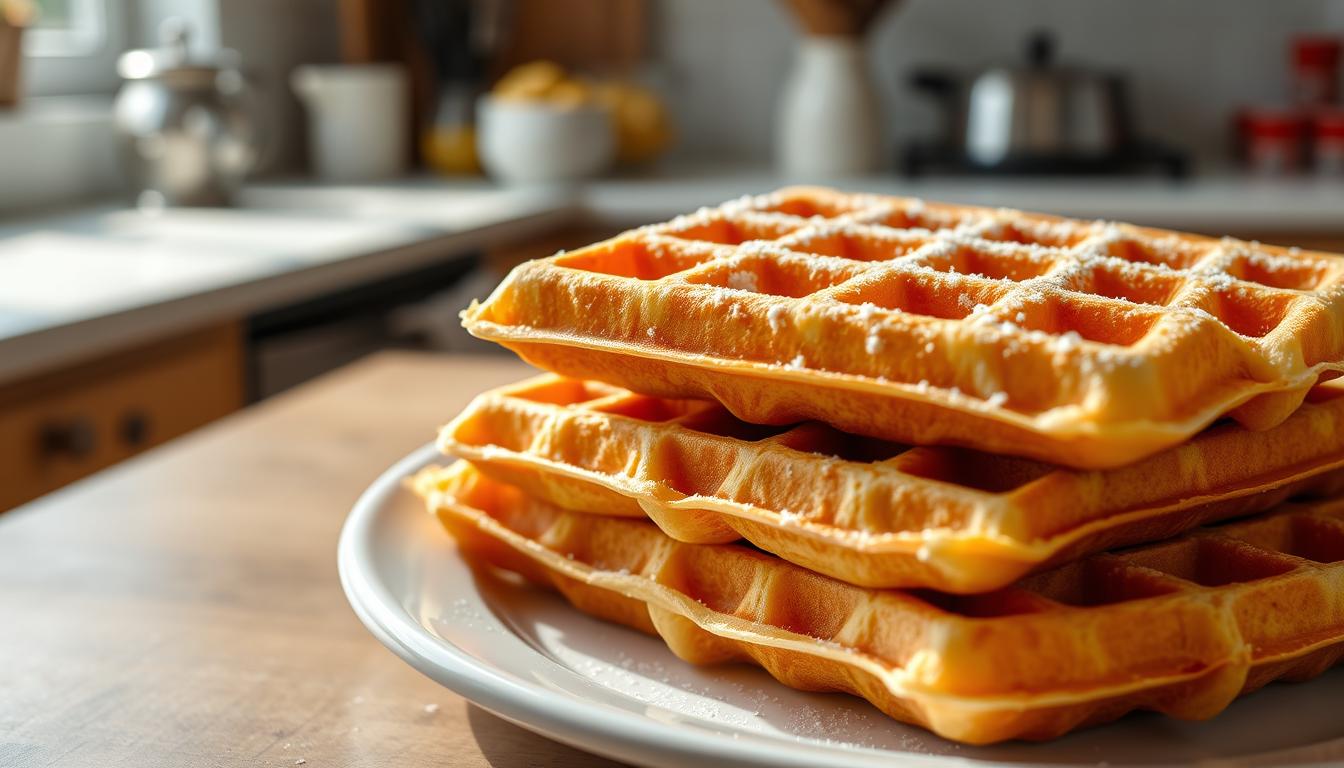
Imagine starting your day with a crispy and golden Belgian waffle, fresh from your own kitchen. The aroma of waffles wafting through the air is a surefire way to make breakfast feel like a treat. Belgian waffles are a beloved breakfast classic, known for their deep pockets that are perfect for holding syrup, butter, or fresh fruit.
With their light and airy interior, Belgian waffles are a delight to make and eat. Traditionally, they are made with yeast, but modern recipes often simplify this by using baking powder. The key to their signature texture lies in the technique of beating egg whites separately before folding them into the batter.
Key Takeaways
- Learn the difference between Belgian waffles and regular waffles.
- Discover the essential equipment and ingredients needed.
- Follow step-by-step instructions for perfect homemade Belgian waffles.
- Get professional tips for achieving a crispy exterior and fluffy interior.
- Explore variations to customize your Belgian waffles.
What Makes Belgian Waffles Special
Belgian waffles are more than just a breakfast food; they represent a culinary tradition that spans centuries. You might be wondering what makes them so unique. The answer lies in their history, texture, and the way they’re made.
One of the key factors that set Belgian waffles apart is their deep pockets and light, fluffy texture. This is due to the yeast-based batter and the way the waffles are cooked in a deep-pocketed iron.
The Difference Between Belgian and Regular Waffles
The main difference between Belgian waffles and regular waffles is the depth of the pockets and the lightness of the batter. Belgian waffles are made with a yeast-based batter, which gives them a lighter texture. They are also cooked in a deeper iron, resulting in thicker waffles with deeper pockets.
| Waffle Type | Batter | Iron Depth | Texture |
|---|---|---|---|
| Belgian Waffles | Yeast-based | Deep | Light, Fluffy |
| Regular Waffles | Baking powder-based | Shallow | Denser |
The History of Belgian Waffles
Belgian waffles have a rich history that dates back centuries. They were introduced to North America during the 1964 New York World’s Fair by Maurice Vermersch from Brussels, Belgium. Originally known as “Brussels waffles,” they were later renamed “Belgian waffles” to appeal to American consumers.
The popularity of Belgian waffles in the United States grew rapidly due to their delightful texture and versatility as a breakfast food. In Belgium, there are various types of waffles, including the Brussels waffle and the Liège waffle, each with its own unique characteristics.
Essential Equipment for Perfect Belgian Waffles
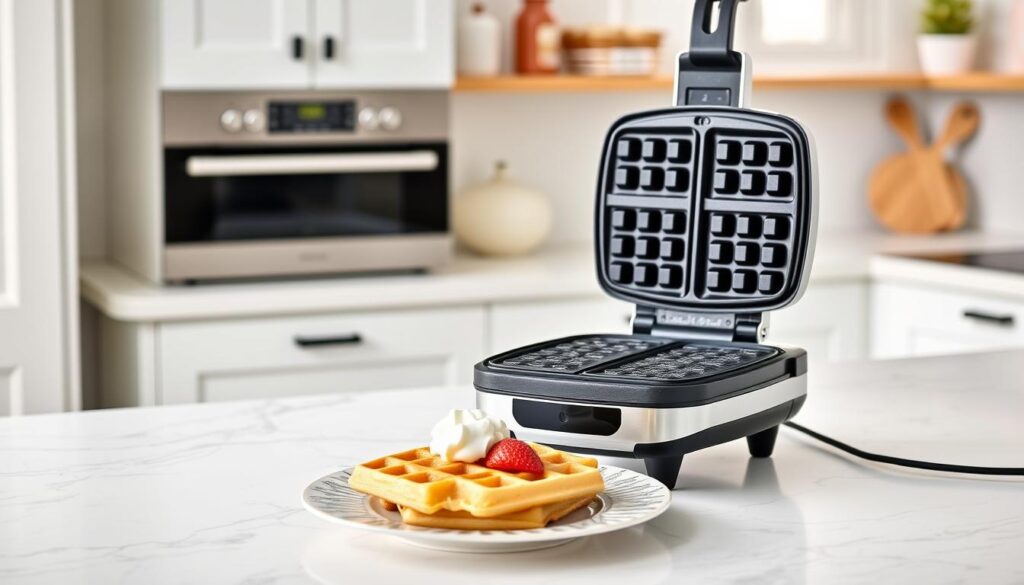
Belgian waffles require specific equipment to turn out light, fluffy, and crispy. To start, you’ll need a reliable waffle iron that can handle the thick batter and deep grids characteristic of Belgian waffles.
Choosing the Right Waffle Iron
A quality waffle iron is indispensable for making Belgian waffles. Look for one with deep grids and a non-stick surface to ensure your waffles release easily and have a crispy exterior and fluffy interior. When selecting a waffle iron, consider the size, material, and heat distribution to ensure it meets your needs.
Other Helpful Tools
In addition to a waffle iron, several other tools can help you make perfect Belgian waffles. A hand mixer or stand mixer is essential for beating egg whites to stiff peaks, a crucial step in achieving the signature light and airy texture.
- A quality hand mixer or stand mixer is indispensable for properly beating egg whites to stiff peaks.
- Mixing bowls in various sizes are necessary for separating wet and dry ingredients and beating egg whites.
- Measuring cups and spoons ensure accuracy in your ingredient proportions.
- A rubber spatula is essential for gently folding whipped egg whites into the batter.
- A cooling rack allows freshly made waffles to maintain their crispness.
Key Ingredients for How to Make the Best Belgian Waffles
The foundation of great Belgian waffles lies in the quality of their ingredients. To achieve the perfect balance of crunch and fluff, you’ll need to carefully select both dry and wet ingredients, with a special focus on the crucial role of egg whites.
Dry Ingredients
The dry ingredients provide structure and flavor to your Belgian waffles. You will need all-purpose flour as the base, along with baking powder to help the waffles rise. A pinch of salt enhances the flavor, while sugar adds a touch of sweetness. These ingredients should be of high quality to ensure the best results.
Wet Ingredients
The wet ingredients bring moisture and richness to the waffles. You’ll need milk or a dairy alternative, melted butter for added flavor, and eggs which play a critical role in the texture. The eggs are separated, with the yolks mixed into the batter and the whites beaten until stiff peaks form.
The Secret to Fluffy Waffles: Egg Whites
Separating the egg whites and beating them until stiff peaks form is the key to light and fluffy Belgian waffles. The whites are then gently folded into the batter, creating air pockets that expand during cooking. This technique is crucial for achieving the signature lightness of Belgian waffles.
| Ingredient | Role in Belgian Waffles |
|---|---|
| Egg Whites | Creates air pockets for a fluffy texture |
| Flour | Provides structure |
| Milk | Adds moisture |
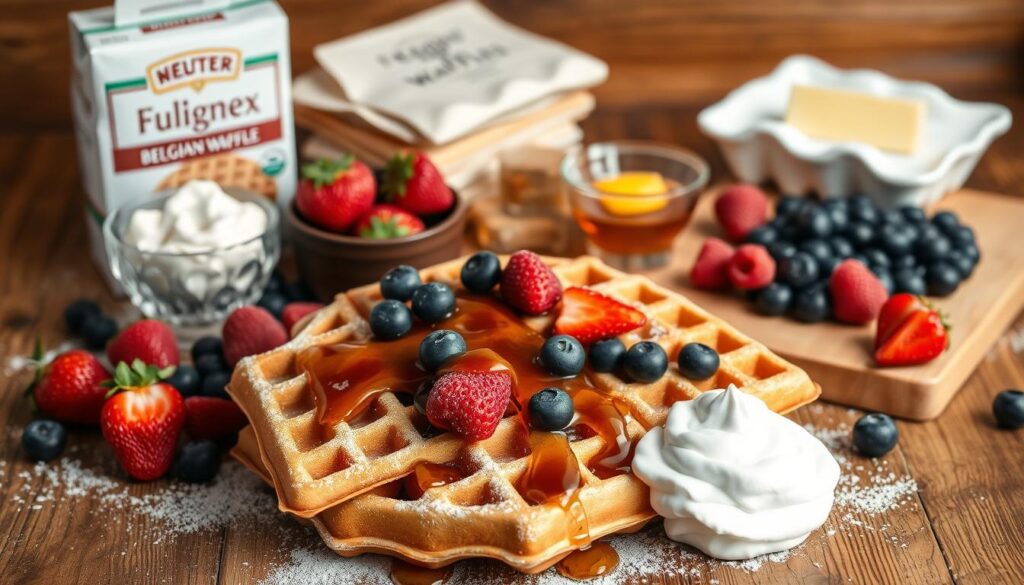
Step-by-Step Belgian Waffle Recipe
Creating delicious Belgian waffles at home is easier than you think with our detailed guide. This step-by-step Belgian waffle recipe will walk you through preparing the perfect batter and cooking it to a golden crisp.
Preparing the Dry Ingredients
Start by combining the dry ingredients in a large bowl. You’ll need flour, sugar, baking powder, and salt. Whisk these ingredients together until they’re well mixed. This step ensures that your waffles will be evenly flavored and have the right texture.
Mixing the Wet Ingredients
In a separate bowl, mix together the wet ingredients, including milk, melted butter, and egg yolks. Whisk these ingredients until they’re fully incorporated. The mixture should be smooth and free of lumps.
Beating Egg Whites to Stiff Peaks
Beat the egg whites until they form stiff peaks. This step is crucial for creating fluffy Belgian waffles. Use an electric mixer on high speed to beat the egg whites until they become stiff and hold their shape.
Combining the Batter
Gently fold the beaten egg whites into the wet ingredient mixture, then combine this with the dry ingredients. The batter should be smooth and have a light, airy texture. Be careful not to overmix, as this can deflate the batter.
Cooking the Waffles
Pour the batter onto your hot waffle iron and cook according to the manufacturer’s instructions. Most Belgian waffle irons take about 3/4 cup of batter per waffle. Cook until golden brown and crisp, about 5-7 minutes depending on your iron.
Before adding batter, ensure your waffle iron is fully preheated. You can test this by sprinkling a few drops of water on the surface; they should sizzle and evaporate immediately.
To prevent sticking, lightly coat both the top and bottom plates of your waffle iron with cooking spray or brush with melted butter.
| Cooking Time | Waffle Iron Temperature | Batter Amount |
|---|---|---|
| 5-7 minutes | Preheated | 3/4 cup |
| Cook until golden brown and crisp | ||
By following these instructions and using the right waffle recipe, you’ll be able to create delicious Belgian waffles at home. Enjoy your crispy and fluffy waffles with your favorite toppings!
Troubleshooting Common Waffle Problems
Making perfect Belgian waffles can be a challenge, but knowing how to troubleshoot common problems can make all the difference. Even with a great recipe and quality ingredients, issues like sticking, lack of crispiness, or density can arise.
Waffle woes can be frustrating, but most problems have simple solutions. Let’s dive into some common issues and how to fix them.
Waffles Sticking to the Iron
One of the most frustrating issues is when waffles stick to the iron. This can be due to insufficient greasing or not cooking the waffles long enough. To prevent sticking, make sure to grease your waffle iron properly before cooking, and don’t be afraid to add a bit more batter to ensure the iron is fully coated.
- Grease the waffle iron with a generous amount of butter or cooking spray before cooking.
- Cook waffles until they’re golden brown and release easily from the iron.
Waffles Not Crispy Enough
Crispiness is a hallmark of great Belgian waffles. If your waffles aren’t turning out crispy, it might be due to undercooking or a waffle iron that’s not hot enough. Try cooking the waffles for a few extra minutes or adjusting your iron’s heat settings.
Additionally, ensuring that your batter isn’t too wet can help achieve the right crispiness. Check your ingredient ratios and adjust as needed.
Waffles Too Dense
Dense waffles can be a sign of overmixing the batter or not incorporating egg whites properly. To avoid this, gently fold in the egg whites and avoid overmixing the batter once you’ve added the dry ingredients to the wet ones.

- Check that your baking powder is fresh to ensure proper leavening.
- Measure your flour by weight to avoid using too much relative to the wet ingredients.
- Ensure your waffle iron is hot enough before adding the batter.
Delicious Toppings and Serving Ideas
Belgian waffles are a versatile breakfast or brunch option that can be topped with a wide range of sweet and savory ingredients. You can enjoy them with classic toppings, fruit and berry options, or get creative with savory Belgian waffle ideas.
Classic Toppings
For a traditional Belgian waffle experience, top your waffle with whipped cream, fresh strawberries, and a drizzle of maple syrup. This timeless combination is a staple for a reason – it’s simple yet indulgent. You can also add some powdered sugar on top for extra sweetness.
- Whipped cream and fresh fruit
- Maple syrup and powdered sugar
- Chocolate chips or shavings
Fruit and Berry Options
Fresh fruit is a great way to add natural sweetness and flavor to your Belgian waffles. Try topping them with a mix of berries such as blueberries, raspberries, and blackberries. You can also use sliced bananas or other seasonal fruits to keep things interesting.
- Mixed berries with whipped cream
- Sliced bananas with caramel sauce
- Fresh peaches with vanilla ice cream
Savory Belgian Waffle Ideas
Belgian waffles aren’t just for sweet toppings. For a breakfast-inspired savory option, top your waffle with a fried or poached egg, allowing the runny yolk to create a rich sauce that soaks into the waffle’s deep pockets. Other savory ideas include pairing your waffle with fried chicken for a classic chicken and waffles dish, or using it as a base for pulled pork or beef brisket topped with coleslaw.
- Fried chicken and maple syrup
- Poached egg and smoked salmon
- Pulled pork with coleslaw
Storing and Reheating Belgian Waffles
When it comes to enjoying Belgian waffles, knowing how to store and reheat them properly is just as important as making them. Proper storage and reheating techniques can help maintain the texture and flavor of your waffles.
Leftover Waffles in the Refrigerator
You can store leftover Belgian waffles in the refrigerator for a short period. To do this, allow the waffles to cool completely on a wire rack to prevent moisture buildup. Then, place them in an airtight container or wrap them tightly in plastic wrap or aluminum foil. Refrigerated waffles can be stored for up to 3 days.
Freezing Waffles for Later Use
For longer storage, consider freezing your Belgian waffles. First, cool the waffles completely. Then, place them in a single layer on a baking sheet and put it in the freezer until they are frozen solid. After that, transfer the frozen waffles to a freezer-safe bag or airtight container for storage. Frozen waffles can be kept for up to 3 months.
Best Methods for Reheating Waffles
Reheating Belgian waffles requires some care to restore their crisp exterior and fluffy interior. The oven is an excellent choice for reheating waffles as it helps maintain their texture. To reheat, place the waffles directly on the oven rack at 250°F for about 10 minutes. For frozen waffles, you can reheat them directly without thawing; just extend the reheating time by a few minutes.
| Reheating Method | Temperature | Time | Notes |
|---|---|---|---|
| Oven | 250°F | 5-10 minutes | Best for maintaining crispness |
| Toaster/Toaster Oven | Adjustable | 2-5 minutes | Quick, but requires monitoring to avoid burning |
| Microwave | – | 20-30 seconds | Can make waffles soggy; use with caution |
It’s worth noting that while the microwave can reheat waffles quickly, it often results in a softer texture. If you choose to use the microwave, placing a paper towel under the waffle can help absorb excess moisture. For an extra crispy finish, you can toast the waffle briefly after microwaving.
Conclusion
The secret to making perfect Belgian waffles lies in understanding the importance of key ingredients and techniques. By following the steps outlined in this article, you can create delicious homemade Belgian waffles that are sure to become a favorite in your household. The key to achieving that signature light and fluffy interior contrasted with a crispy exterior is properly beaten egg whites.
You can enjoy your Belgian waffles with classic toppings like maple syrup and butter or get creative with various fruit, whipped cream, or savory options. With the storage and reheating tips provided, making Belgian waffles can be part of your regular meal planning, allowing you to prepare batches in advance for quick and delicious meals throughout the week.
By mastering this Belgian waffle recipe, you’ll be able to enjoy restaurant-quality breakfast treats whenever you desire, often surpassing commercial versions in both flavor and texture.

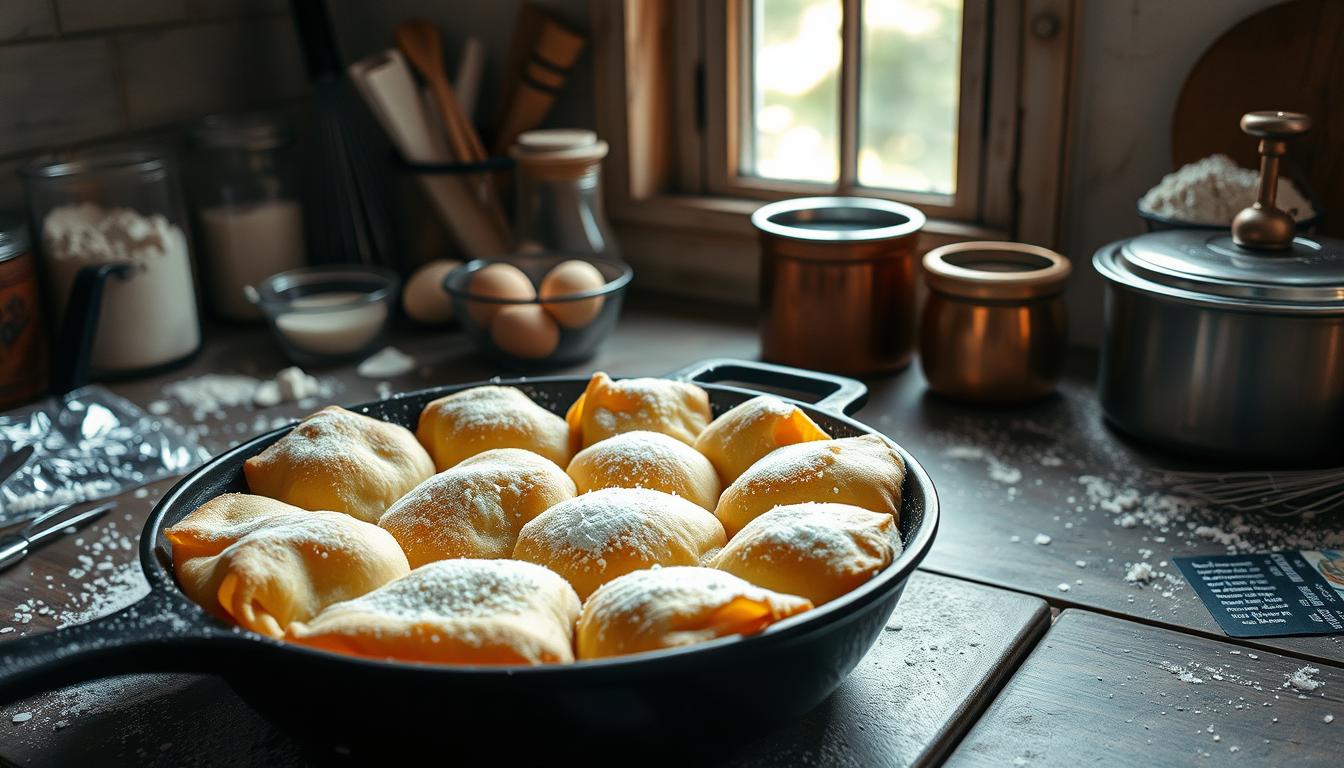
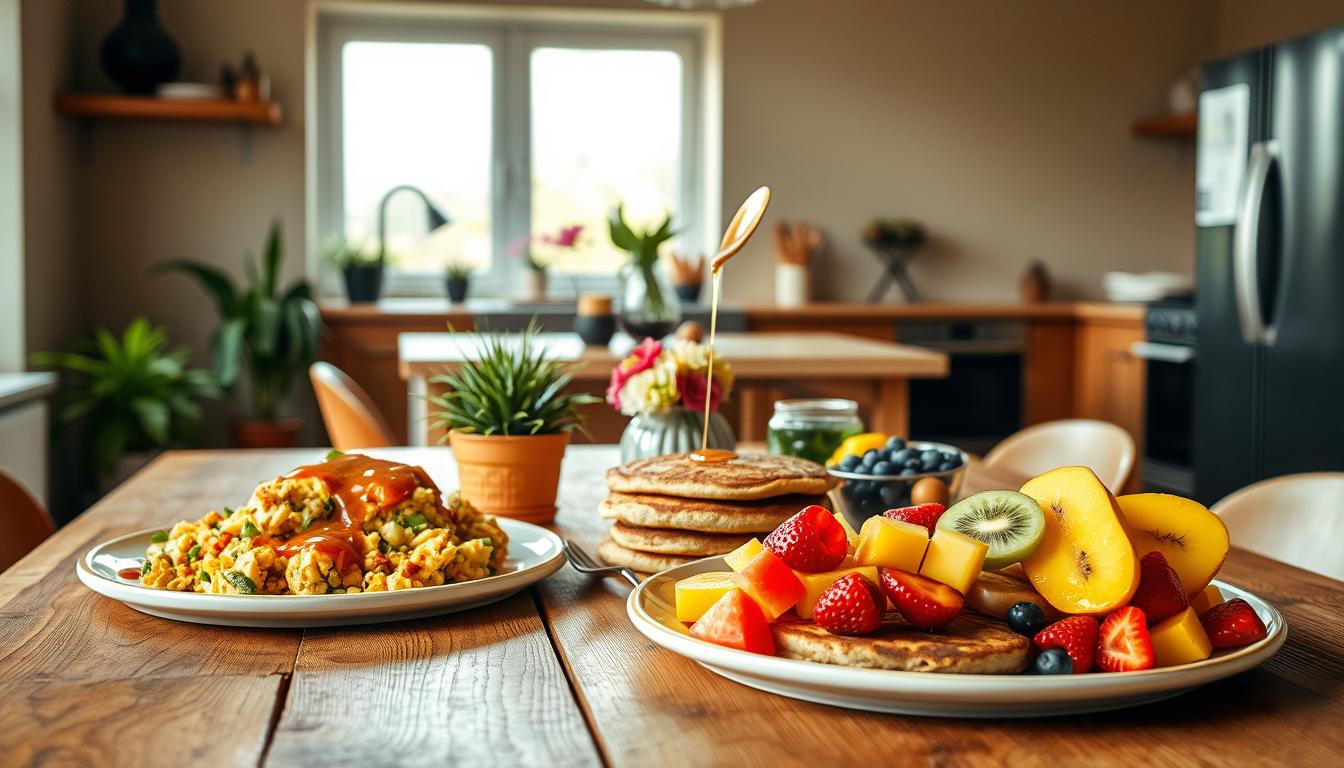
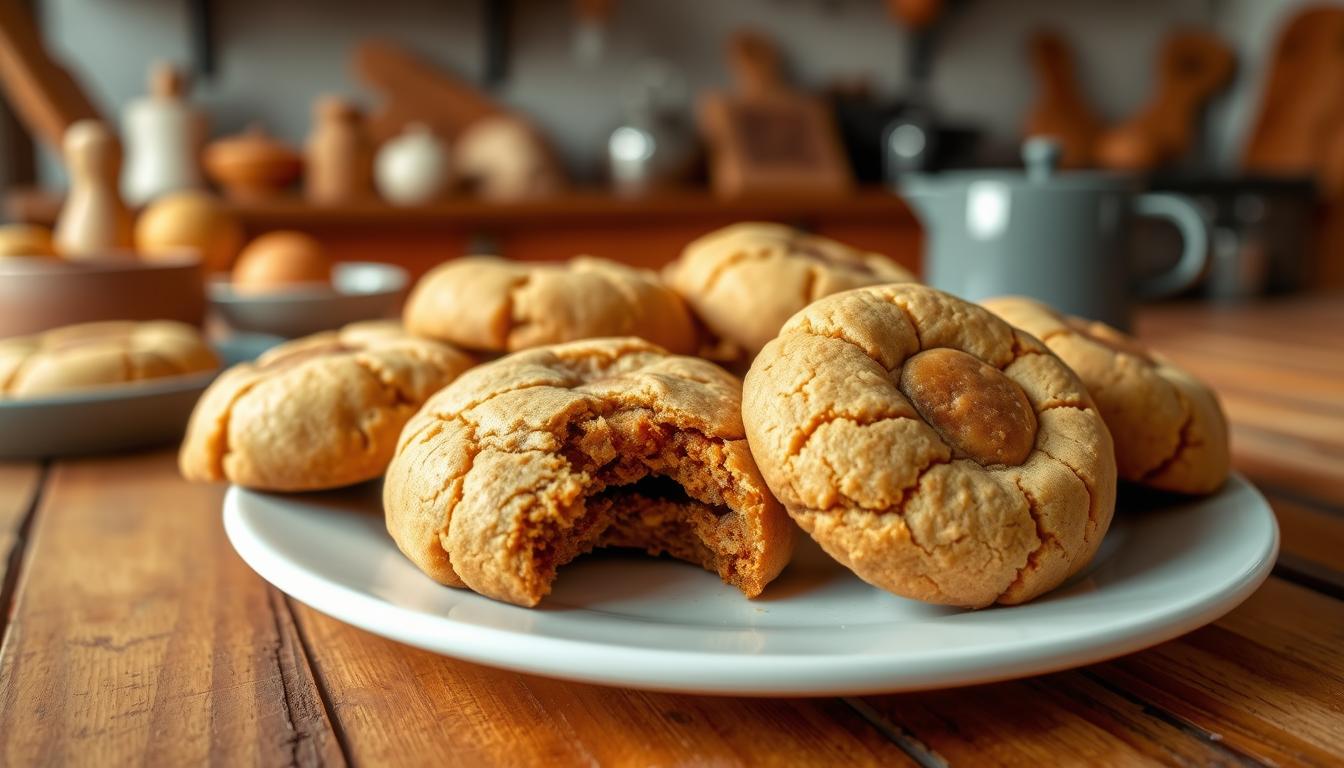

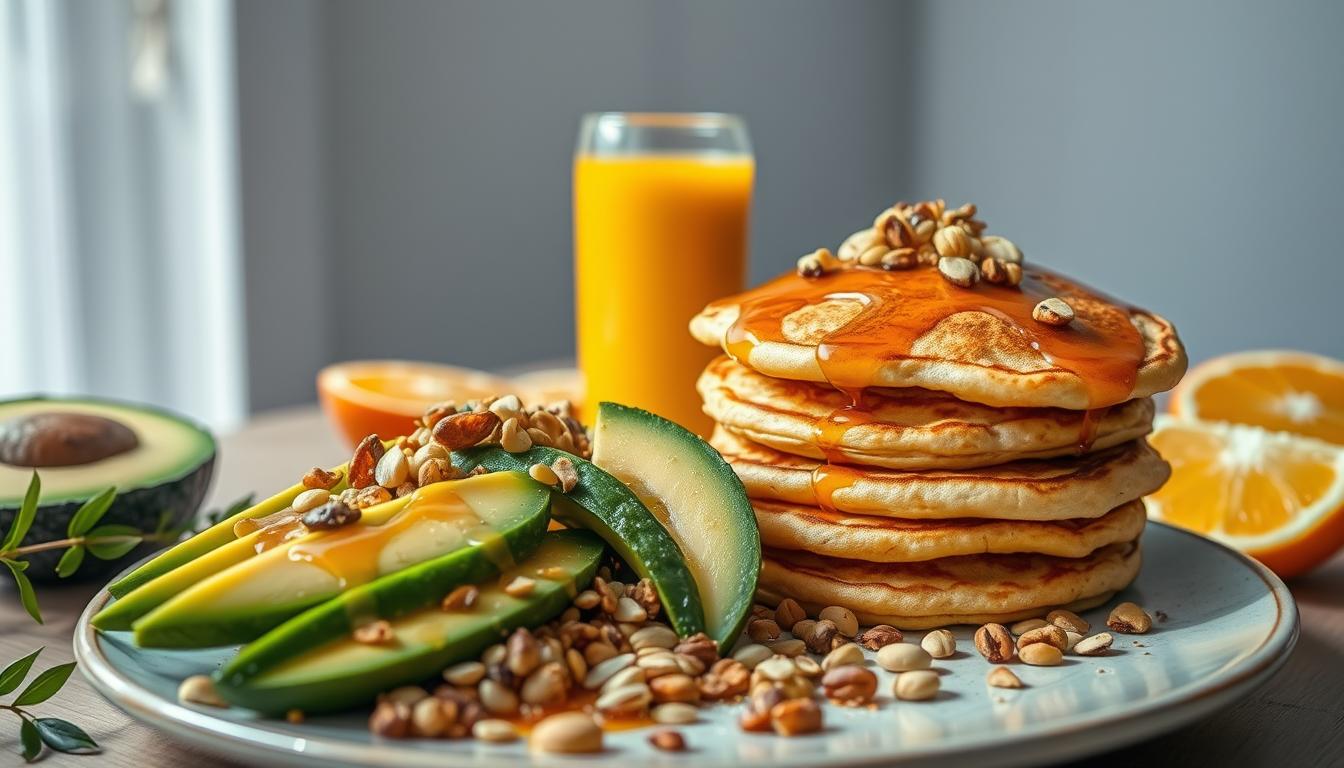
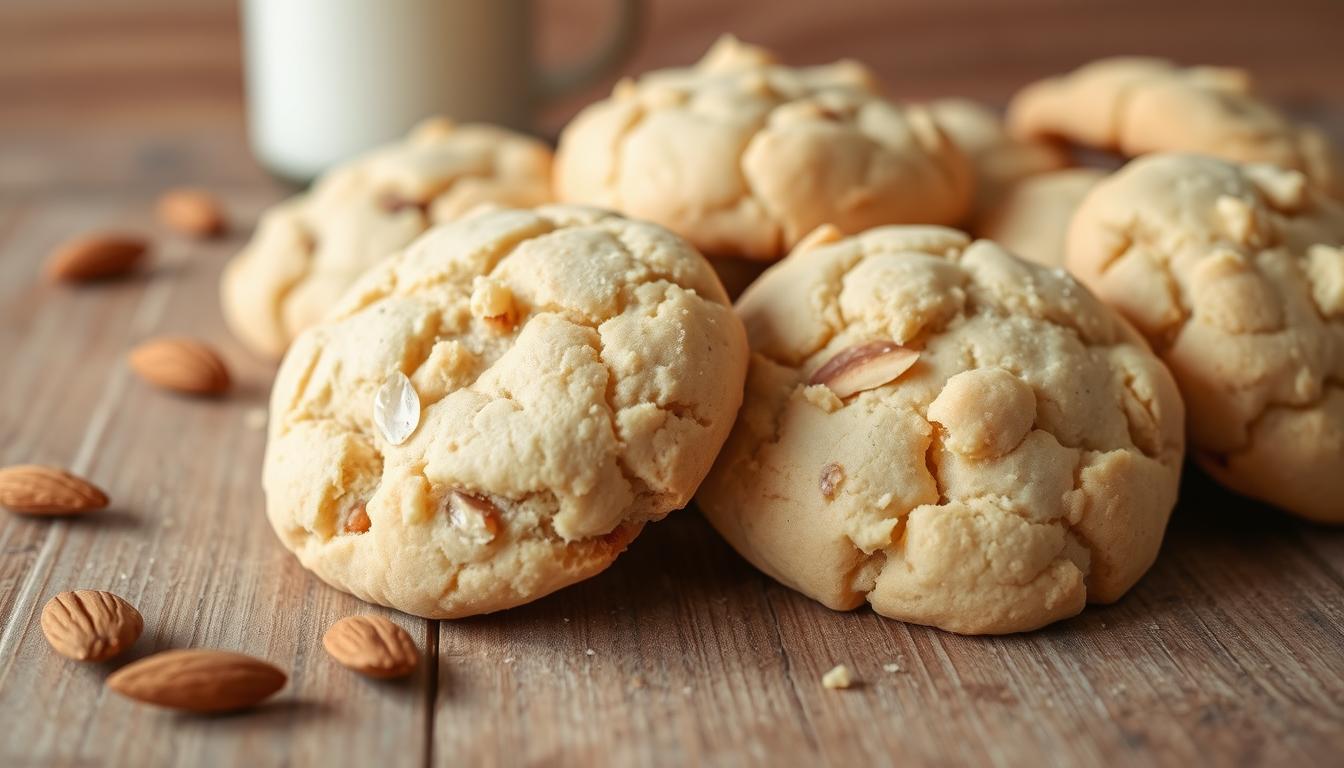
One Comment
Comments are closed.